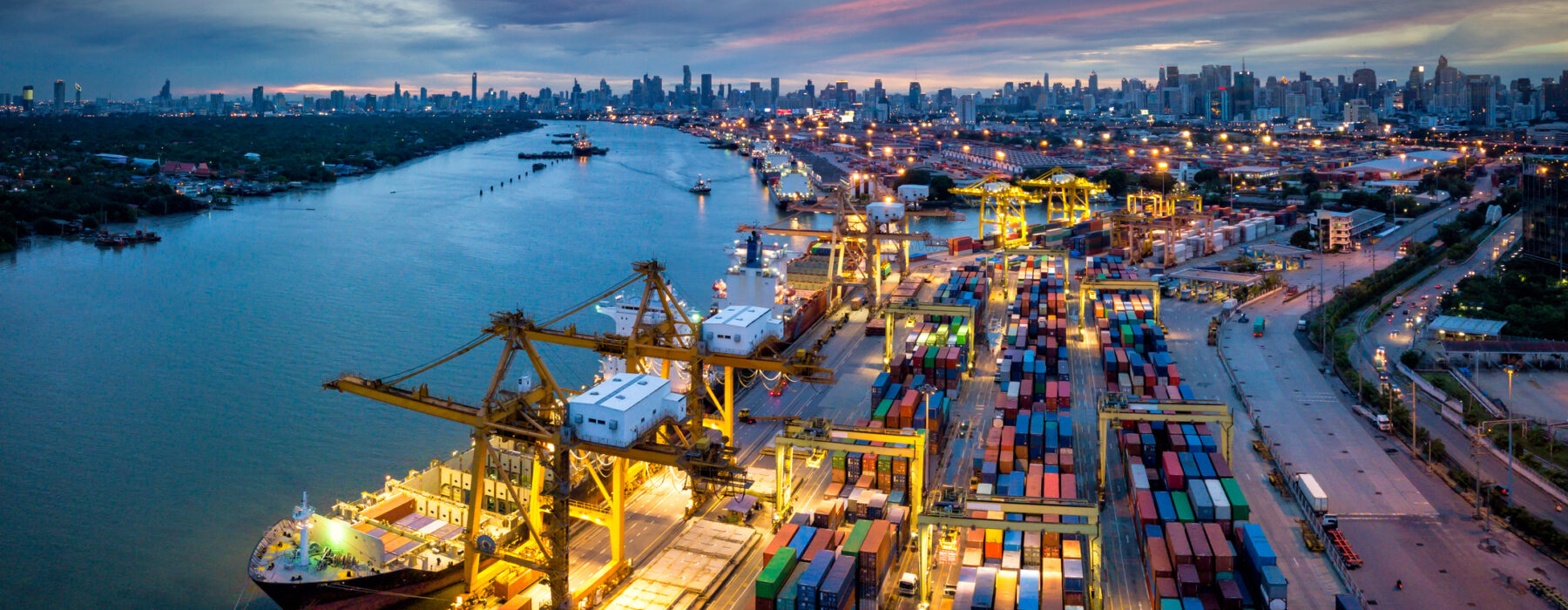NOVEMBER 30 • 2020

Logistics Technology Trends for 2021

Logistics Technology Trends for 2021
By Robert Steward • President and CEO of End2End, LLC
In a previous article, we talked about the meaning and future of logistics, but in case you
missed our last article, here’s a quick recap:
Logistics is the management of the flow of goods or assets from the point of origin to the point of consumption.
In that article, we concluded: The future of logistics lies in innovation and technology.
Consumers are expecting things to happen quickly, and if logistics businesses don’t adjust themselves, customers will look for other options.
In this article, you’ll find the key logistics technology trends for 2021 so that you can start disrupting your business model and embracing the new technology trends.
Challenges of the Logistics Industry
Logistics professionals are more concerned with the speed at which technology is evolving than ever before. Some transport and logistics businesses have struggled to keep up with the developments in technology.
Nevertheless, as innovation and digital disruption become fundamental parts of the strategy of many businesses, the role of the logistics and supply chain sector needs to change to maximize the value of any digital investment your company makes.
Here are some challenges the logistics industry must face in 2021.
Supply chain integration
Trade has globalized. It has become critical to monitor global trade flows and geopolitics to understand the impact of supply and demand.
But supply chain integration is not only about complying with the current trade regulations. Businesses need to integrate all the touch points in the supply chain to avoid data silos.
One of the main challenges of the logistics sector is being able to increase flexibility when it comes to shipping, but in all of this, the new transport management can enable businesses to assist or manage some of these challenging integrations in the supply chain.
Changing customer expectations
Customer expectations are changing, thanks to technology. Besides, as customers become data-enabled, they expect that their logistics services keep them informed throughout the process.
Similarly, due to the growing amount of information available, customers want to find a business that deals with their specific expectations. This means that the era of catch-all solutions is slowly fading, and it’s being replaced with a new transparent, technology-powered supply chain.
With that in mind, logistics professionals need to turn to providing the best value possible to the customer, which means understanding the impacts of technology trends in the transport and logistics process to let the customer see what’s happening at every step of the way.
Evolving digital requirements
Many logistics businesses are still struggling with their legacy siloed approach to logistics, especially when it comes to their IT systems.
Similarly, the challenge with these evolving digital requirements is that they’re jumping on the digital bandwagon without fixing their traditional problems before they disrupt their business models.
With that in mind, the real challenge of logistics professionals is to get into the right speed, or else they will face two different ways of doing business that clash with each other.
Digital transformation
We all know that the digital transformation implies reshaping your business model to stay competitive in the digital age, but one thing is certain. Not investing in transforming your logistics processes can result in fewer profits.
However, besides implementing a new set of rules, the digital transformation also implies changing your mindset for business. It goes beyond installing apps and adding IoT- powered GPS tracking to your assets and expands on how data can disrupt your business.
Core systems rejuvenation
If you don’t know what your core systems are, you might want to start here before trying to disrupt your business.
Often, businesses grow disparately and with dissimilar architectures, which makes it harder for all the stakeholders to understand the business.
But fear not, because most of the logistics technologies we will show can help you rejuvenate your business and modernize your supply chain management.
4 Logistics Technology Trends for 2021
As you know, the globalization and digitalization of the economy is impacting the logistics sector, creating new technology trends that essentially change how products are created.
This, of course, is most evident in the consumer and retail sectors, which put pressure on the logistics and supply chain industry. Instead of persevering with having an undifferentiated logistics structure, businesses looking to implement the new logistics trends need to find a more differentiated approach to both supply chain and organization.
1. Proactive cybersecurity
With more businesses transitioning into the digital landscape, so too are cyber criminals becoming better at finding new plans of all shapes and sizes.
In fact, if you’re part of a logistics company, you’d better prepare yourself to be hacked, because it’s not out of the ordinary.
However, the truth is that most cyber-attacks come from the inside. They are typically caused by employees creating internal open vulnerabilities. Contrary to popular belief these vulnerabilities are more than likely not caused by disgruntled employees, but employees who, unknowingly, are not following a well-designed cyber protocol.
With that in mind, a proactive approach to cybersecurity involves starting at home, monitoring how much data employees have access to, and creating a set of rules and procedures to handle sensitive data.
2. Logistics automation and IoT collaborative robots
Automating warehouses and order fulfillment with robots isn’t easy, but most logistics companies are looking to use them to simplify the process because, as we said earlier, consumers are pushing for more innovative logistics methods.
The rise of e-commerce requires logistics providers to operate faster and more efficiently to process small, individual orders. This, along with labor shortages, means that robotics are becoming a necessity in the logistics landscape. With 80% of warehouses being manually operated, using collaborative robots is a way of making things more flexible, accurate, and affordable for all the parties involved.
3. Improved last mile deliveries
Last mile logistics has become a popular topic for logistics professionals due to the growing demand for goods. With these evolving needs, both retailers and logistics professionals need to evaluate the capabilities and adjust.
Last mile deliveries are part of that disruption, because they enable consumers to shop for products with the confidence that the products will arrive in a timely fashion, especially in areas where traditional transportation methods are not successful.
4. Mobile app logistics solutions
Mobile app logistics solutions are meant to smooth the operations and address the ever- changing needs of the supply chain and logistics sectors. The main benefit of a mobile app is that you can customize it to suit the needs of your business, or you can find a logistics app that helps you with your specific needs.
For instance, a mobile app can record all the data related to fleet management, helping you assign the app to the driver of the vehicle and manage the fleet with a comprehensive solution. Also, you could streamline your warehouse management with an app and increase your visibility over your assets.
In a nutshell, with a mobile app, the sky is the limit.
The Future of Logistics
Soon, logistics will shift from undifferentiated logistics structures to more differentiated supply chains tailored to different modes of transportation, warehouses, and distribution.
The market changes that bring more decentralized supply chains are putting pressure on logistics businesses, where adequate infrastructures are not yet fully developed.
Business owners and people in the supply management space will build up direct distribution channels that link businesses to the end consumer. This will enable them to either develop their own e-commerce operations or distribute their products via third-party platforms.
Likewise, the logistics of the future will focus on enhancing the visibility of the supply chain as a way of increasing product security and integrity. This will also help optimize the logistics process in areas such as outsourcing, emergency logistics, transportation, and demand-driven supply chains.
The new, changing trends in the technology industry will surely bring many consequences for the logistics sector. Shifting consumer patterns and innovative transportation management methods will have an impact on how goods and assets are stored and transported.
At the same time, these new logistics technology trends will bring changes in regulation, competition, and costs as markets become more centralized and supply chain rules start changing towards technology-centric logistics models.













